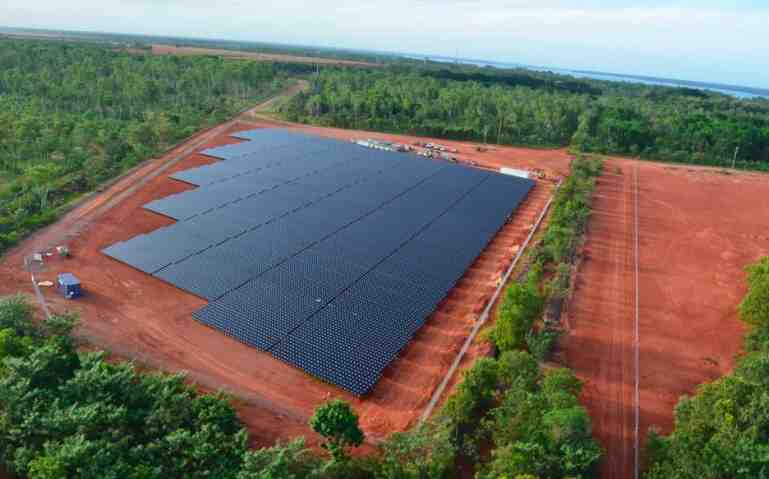Global mining giant Rio Tinto is looking at adding renewables and battery storage to its main mining sites, including the Tom Price iron ore operations in the Pilbara where it sending $1 billion to upgrade and extend the life of the massive project.
Rio Tinto is just the latest to look at the combination of wind, solar and batteries to reduce the crippling cost of energy sourced from gas and or diesel that is usually used in Australia’s mining operations.
Just last week, Gina Rinehart’s Roy Hill mine flagged it was looking for a specialist in alternative fuels for its Pilbara operations, and Twiggy Forrest’s Fortescue Metals is already committed to building a 60MW solar plant to help power, and lower costs, at its iron ore mines.
BHP has recently conducted a tender that will see it source 100 per cent renewable energy for its Chile copper mines, and it is still going through submissions for its Australian operations, which include iron ore in the Pilbara and the giant Olympic Dam project in South Australia.
Mines have been slow to pick up on the falling costs of renewables and battery storage, given the limited mine life and their focus on reliability. But success at the Degrussa copper mine in W.A. has in turn led to other ground-breaking projects, including the new (partially) commissioned project at the Agnew gold mine in W.A., which will feature the first wind, solar and battery hybrid in an Australian mine.
Rio’s interest in looking at renewables was confirmed in its announcement this week that has approved spending $1 billion to expand the capacity and mine life of the Tom Price operations in the Pilbara.
This upgrade will include a new conveyor system that will help lower greenhouse gas emissions from the mine by 3.5 per cent compared to road haulage, and a switch to more autonomous haul trucks.
“And the business is continuing to assess additional options to reduce emissions including renewable energy solutions,” the company statement says.
 Rio Tinto spokespeople said the company is not commenting beyond this, but pointed RenewEconomy to an earlier company report that identified the potential of using solar and wind and battery storage to reduce costs and emissions at the Pilbara iron ore operations, and its bauxite operations and the Oyu Tolgoi copper and gold project in Mongolia. (See table above)
Rio Tinto spokespeople said the company is not commenting beyond this, but pointed RenewEconomy to an earlier company report that identified the potential of using solar and wind and battery storage to reduce costs and emissions at the Pilbara iron ore operations, and its bauxite operations and the Oyu Tolgoi copper and gold project in Mongolia. (See table above)
“We are also exploring renewable energy solutions,” iron ore chief Chris Salisbury told an investment seminar in London last month, when commenting on climate solution.
Rio Tinto currently sources 71 per cent of its power needs from renewables, but that’s mostly the result of the massive hydro resources for its smelters in Canada.
In Australia, it has installed a small solar array at the Weipa bauxite operation, with the help of the Australian Renewable Energy Agency (pictured above) but it is yet to go through with a plan to upgrade the 1.7MW solar facility to the planned 6.7MW array and add battery storage.
It noted in its climate report report the solar plant at Weipa, and a 9.2MW wind farm at the Diavik mine in Canada “have helped us to understand and plan for operational risks, such as integration into our existing power systems and intermittency.”
But it also said” Solar photovoltaic (PV) and battery technology is expected to be cost competitive against other reliable energy sources by mid to late next decade.” Many others would argue that they already are, particularly when pitched against gas and diesel.
The Pilbara is rich in both wind and solar resources. The Asia Renewable Energy Hub consortium, which includes CWP Renewables, Vestas and Macquarie Group, wants to build 15GW of wind and solar to power lower industry and to export hydrogen or “green metals.
A smaller mining company, Element25, is looking to wind and solar to power at least half of the electricity needs from its Butcherbird manganese project, where it says cheap renewables can help it to produce manganese metals at a lower cost than can be done in China.










